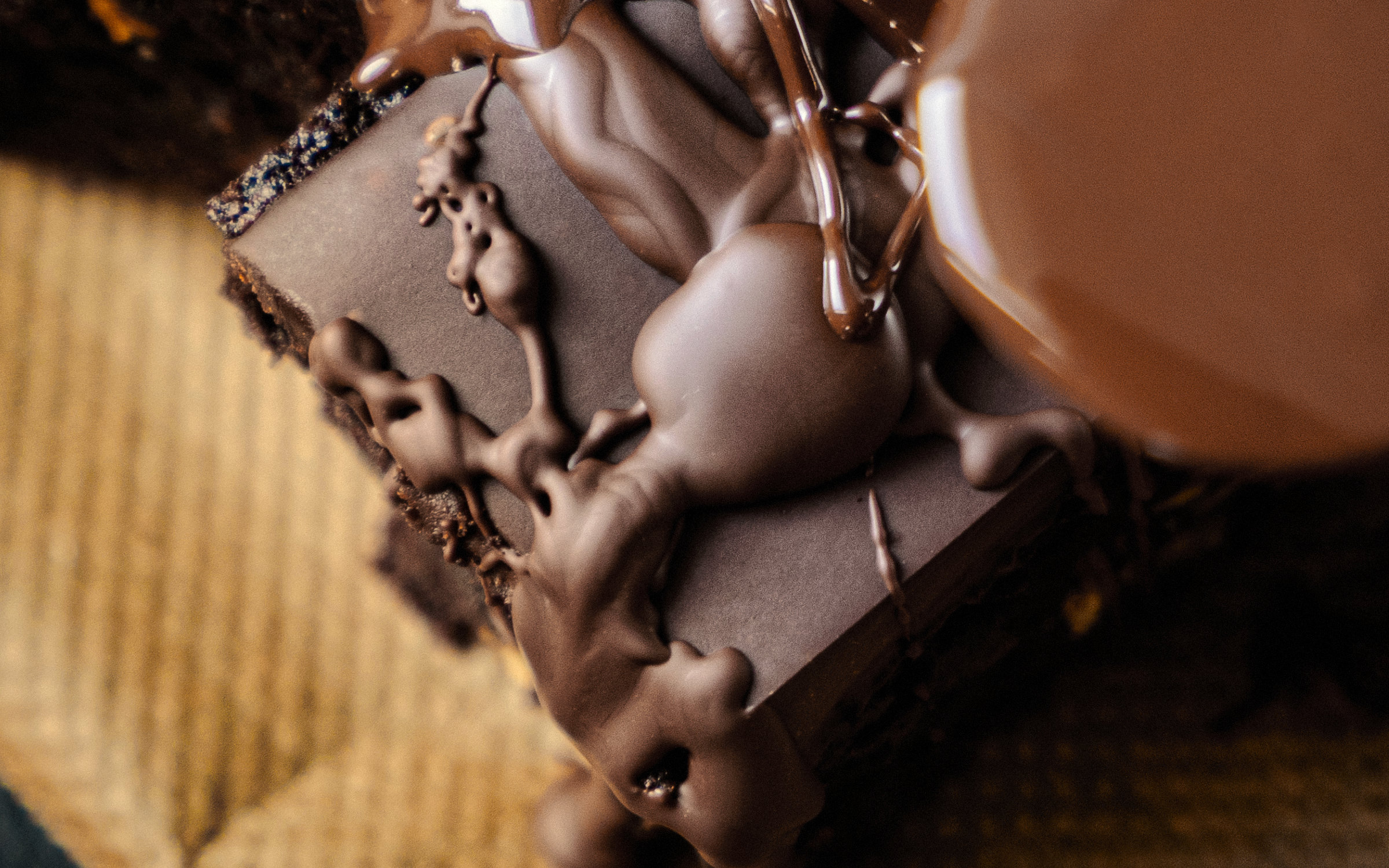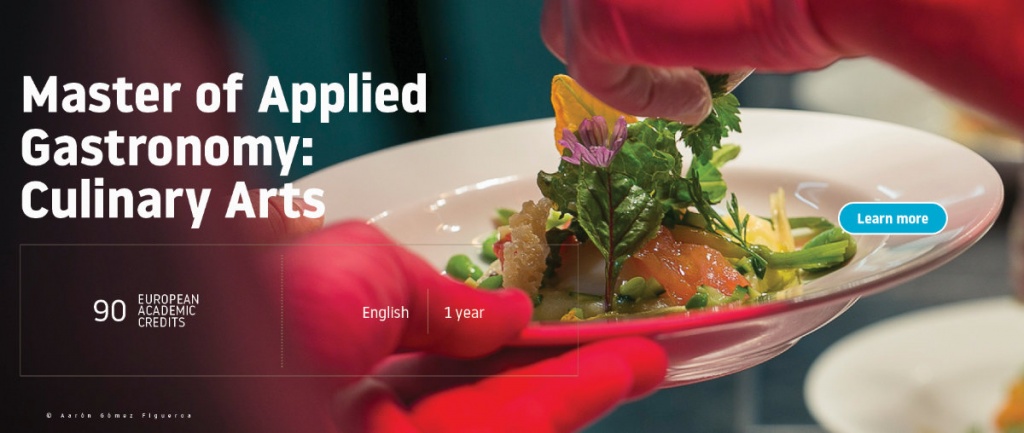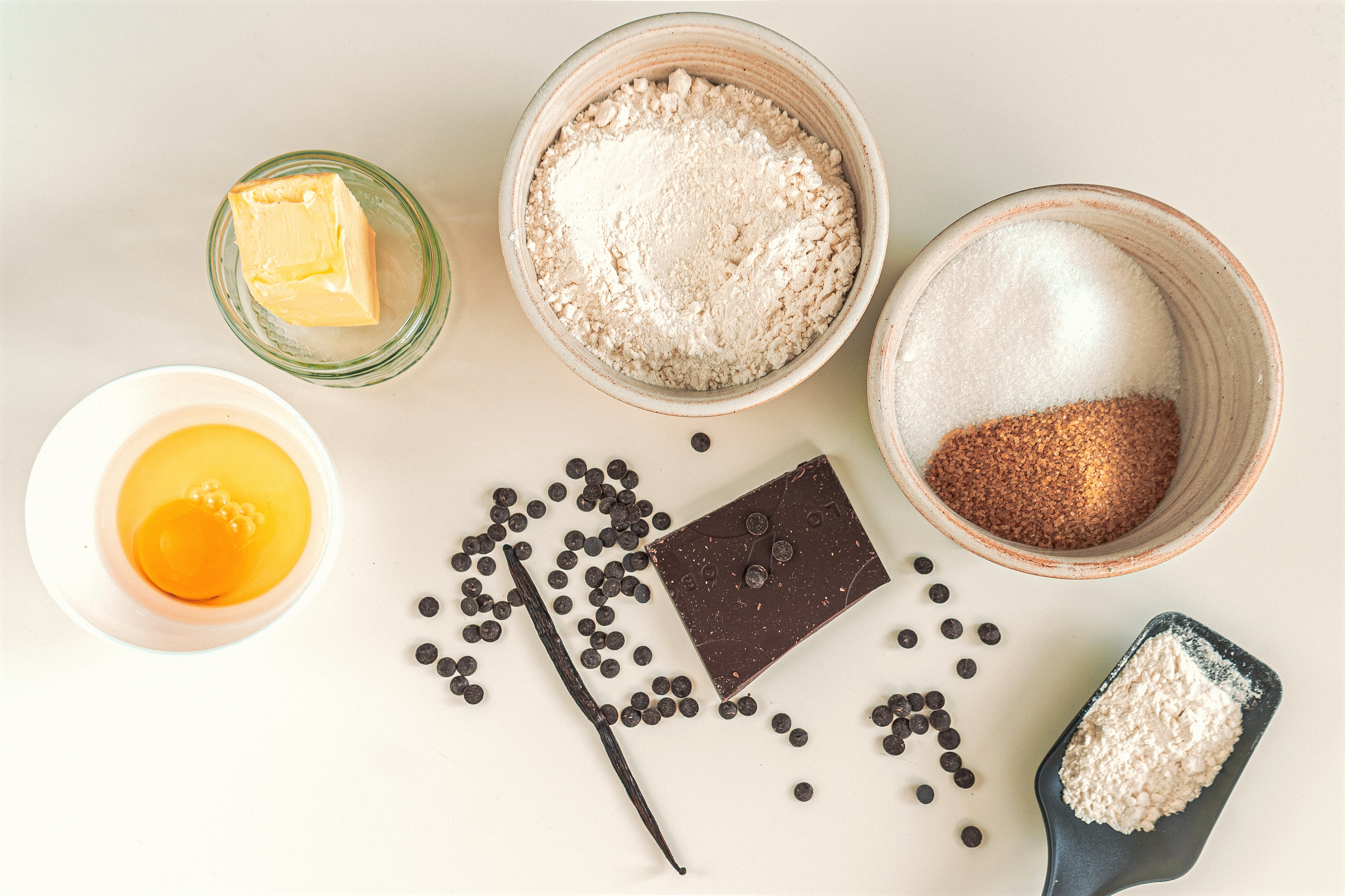The New Gastronome
Sustainable Pastry
by Marie Kerkeling
by Marie Kerkeling

I ended up in the pastry industry out of convenience, though my mother would tell you it was an act of rebellion because she hates everything sweet, especially chocolate.
In reality, I was doing a culinary apprenticeship in a Michelin-starred restaurant when I was randomly put on the pastry station overnight after five months of working various savoury stations. Someone was missing for the evening service, so I stayed. In professional kitchens, we are often understaffed. Apprentices and trainees make up for this shortage. We are a bit like the infantry corps that this food army badly needs: low wages, a desire to learn and a naivety typical of the young make us prime targets.
I was 20 years old, with all kinds of problems and working in the restaurant business gave me a framework and a structure to keep me going. I worked 14 hours a day in a place lit by sizzling neon lights but without windows. It was hot; it was cold; it was all four seasons in one room. There was a swarming of gestures, noises, colours, and endless effervescence of smells, especially the characteristic white vinegar one, specific to every kitchen. We were cleaning morning and evening after service, no exception.
Each person had a well-established place. The dishwashers, Black, in the phase of regularization, wore the old shirts of the chefs. The chefs de partie, primarily white men of all ages, were agitating for the Chef’s favour. The trainees and apprentices were a motley mix of what the school provided. When useful, they went to work at the ‘fire’. Otherwise, they did the cleaning. On top of this pyramidal organization was the second cook and, finally, the Chef, with a capital C. The second cook was a woman with a strong character who, depending on the situation, took on the role of protector or executioner. A rare female presence, she had to be respected twice as much by the chefs. She once told me: “This is the last time I will see you cry here. If you show your weakness to others, it’s over for you. They will use it. You are a warrior.” I didn’t cry in front of them anymore. The Chef was a white man in his forties, the orchestra conductor, the one everyone wanted to please, respected and feared because of his position, yet strangely less present than the second cook.
It was here that I learned the complexity of emotions. I learnt about compromise and assertiveness. I saw solidarity and pure benevolence that existed alongside intolerably toxic behaviour. I saw self-inflicted violence to reach a so-called perfection, and I felt the adrenaline of the service and its shortcomings. I gained the respect of others and experienced the perpetuation of clichés too well anchored. Within this enclosed microcosmos, I became passionate about pastry.
The cupboards of my pastry station looked like those of an alchemist. I was living in a magical world filled with my boxes. Square and labelled, they were full of textures and colours ready to be added to my creations. When I made macarons for practice, I obsessed about finding the right shade of green, like a painter aware that celadon green and pale green belong to two different worlds entirely. I lived in a universe of bright, crisp and sparkling shades presented on a plate: pistachio paste, Tahitian vanilla, 80% dark chocolate, powdered sugar, pecan nuts, Buddha’s hand, Isigny butter, mara des bois strawberry, white wheat flour, Manuka honey, chestnut cream, white truffle. An edible artist’s pallet! Yet, behind this magic, there were also powders and substances with strange names: Staab 2000, Pectin, Flan powder, Gum arabic, Lecithin powder, Dextrose, Glucose, Nougasec, Agar-Agar, or the famous Titanium dioxide1. Despite all this, I tried to make my pastries ephemeral, akin to gourmet art. I tried to recreate sensory and gustatory experiences that people could keep as memories long after dinner was over. After all, nothing is worse than ending your meal with a bad dessert.
A. D. V. E. R. T. I. S. I. N. G.
Wearing my white apron, full of its multicoloured stains, the chef, half in disbelief and half in amusement, always ended up telling me: “You really are different!”. For a long time, I wondered what he meant by that. Maybe it was because I asked too many questions: I always wanted to know the whys and wherefore of things, techniques, products, logistics, etc. Why so much waste in the name of perfection? Why so much plastic and packaging? Why did I have countless intermediate products in my cupboard? What could I do with my leftovers? How could I become a more sustainable pastry chef, and what was that even supposed to mean? The answers were never good enough for me, but I understood that creating pastry was to negotiate a world of compromise as it is an ultra-precise craft, down to the tiniest gram. Eggs, for example, are separated into two different measurements: white and yolk. An egg is too vague a measure for pastry chefs!
To avoid wasting products, the food industry has been inventive. Again, eggs are a perfect example: they are available in liquid or brick form, yellow or white, powdered or frozen. No more egg breaking, therefore, no more shells, fewer hygiene problems but a clean, practical product that saves time and storage space. A genius invention, especially as I’ve always been bothered by having liquid egg yolks. It’s a compromise, but it’s comfortable – similar colours and textures with each new brick, rarely any traceability on the breed of hens used or the way they are kept. In short, a well-established industry and, like most other agri-food industries, constantly innovating products to facilitate pastry life. Most of the time, the seductive aspect of this kind of product – the eggs are only one example of many – goes against the idea of sustainability as these products use more plastic and are usually processed rather than fresh and local.

Fortunately, I later got the chance to work at a sourdough bakery, which allowed me to think more responsibly. Besides sourcing products, our bosses, known as “AAA”, let us experiment to reduce leftovers. Unsold bread, for example, is a real problem for bakeries, so, inspired by projects, such as “La cloche à Biscuit”2, we rethought some recipes and added bread powder made from our unsold products. We used it in the Financier and to line the cake pans where it gave a nice crispy texture to the sides of the cake. I also learned to think of products in their entirety. When buying fruit, everything can be of good use: apple seeds, for example, are helpful for jam-making due to the pectin they contain. Citrus peel can be preserved when only the juice is used in a recipe. Apricot or cherry pits are flavorful when you recover their kernel and make an extract. And, my favourite, whey! For our sandwiches, the savoury team would make homemade curd. We would then collect this precious leftover liquid and use it to make our puff pastry or choux. Its use is so vast and brings umami taste and textural twists to pastries that I greatly appreciate.
Working in this kind of environment requires smart logistics, a great involvement from each person in the team and a lot of time. And time is money! For these reasons, places like that are not found too often. But even in nice projects like this, sometimes, for convenience or in exchange for saving money or time, we pastry chefs overlook the traceability of products and their environmental production costs. Especially when it comes to the symbolic products of our craft.
Take vanilla, for example. 80% of the world’s production comes from small family farms on the island of Madagascar. Faced with climate change, the island has suffered storms, floods and other natural disasters in recent years, which caused the vanilla price to fluctuate – from a price as high as 800€/kg to one as low as 80€/kg. It’s the second most expensive spice in the world. Still, the farmers usually receive a smaller amount of money for their production than the intermediaries, often leaving them living close to the world poverty line.
Additionally, work conditions on these farms usually consist of long and hard days, intense climatic conditions and hazardous situations with inadequate tools. From an early age onwards, children are expected to work on the farm, being forced to exchange their school education for time spent taking care of vanilla vines. So, is child labour a criterion for a sustainable product? It should be!
And it doesn’t always have to be vanilla! There are actually wildflowers growing around us that contain a very similar aromatic compound called coumarine. Therefore, Meadowsweet, sweet clover, or master of the woods (preserved in simple syrup or infused) can enliven your desserts with the same comfort vanilla does.
“When buying fruit, everything can be of good use: apple seeds, for example, are helpful for jam-making due to the pectin they contain. Citrus peel can be preserved when only the juice is used in a recipe.”
Next on the proverbial and literal chopping block: chocolate. Here, the picture is even darker. Not only do children work on chocolate plantations (mainly in West Africa), they are also denied education and exploited in conditions that are close to what we would call slavery. My teacher, Simran Sethi3, has just released a heartbreaking article about US chocolate companies’ responsibility for child-labour abuses in the global cocoa supply chain based on two supreme court cases in which former child workers testified anonymously against Nestlé and Cargill. They described their “work” in the chocolate farmstead as such:
“Respondents were beaten with whips and tree branches when their overseers felt that they were not working quickly enough.”
“One Respondent, John Doe IV, tried to escape, and when the overseers caught him, they cut the bottoms of his feet and rubbed chilli pepper into his wounds. He was also tied to a tree and beaten until his arm was permanently damaged.”
These testimonies describe a reality far removed from the glamorous images we see on Instagram. Today, the hashtag “patisserie” combines more than 9.4 million posts, but how many of these Instagrammers are aware of the brutal acts behind the scenes of the pastry world, dirtying their immaculate white jackets? It simply feels like the pastry world does not want to look at it most of the time. But as people start to take a more committed, more local, more reasoned and sustainable turn, it’s time for pasty to change, too. It needs to reinvent itself, from the working conditions of the employees in its kitchens to the invisible workers along the supply chain, while we need to ask ourselves the right questions: “What’s our criteria for sustainability?”
To consume pastries is a privilege. By accepting not to see, we consolidate unfair systems such as modern enslavement of people – including children – somewhere else in the world. Pretending not to be concerned or not to know can no longer be an excuse, especially when we are connected on our social networks almost all day long, liking paradisiacal pictures from everywhere around the world. At the same time, journalists, sometimes at the expense of their existence, testify and report on sordid exactions somewhere else in the same world. The least we can do is to read their stories. We must hold accountable those who bake for us, from supermarkets to fancy pastry shops and family traditions. Pay attention to their work conditions and products. Refuse the status quo of gluttony and comfort. And if this passion is to be renewed, let’s be creative and eager to learn.
The road to becoming sustainable pastry chefs is still a long one, but knowing about what goes on behind the scenes is the first step.
Notes
[1] This white powder was used until a few years ago as white dye. Banned in France from 2020 by the precautionary principle as the non-toxicity of this product is not recognized.
[2] A biscuit factory-made from unsold bread donated by bakeries, and which employs homeless person to help them to get out of the street
[3] Food journalist and author with a thoughtful heart
Bibliography
Vanilla Prices via The Conversation
The Problem with Vanilla via Scientific American
Child Trafficking in Chocolate via The Counter
Vanilla Fever via Mail & Guardian
La Cloche via Fondation Carrefour
Photos by Deines Rojas